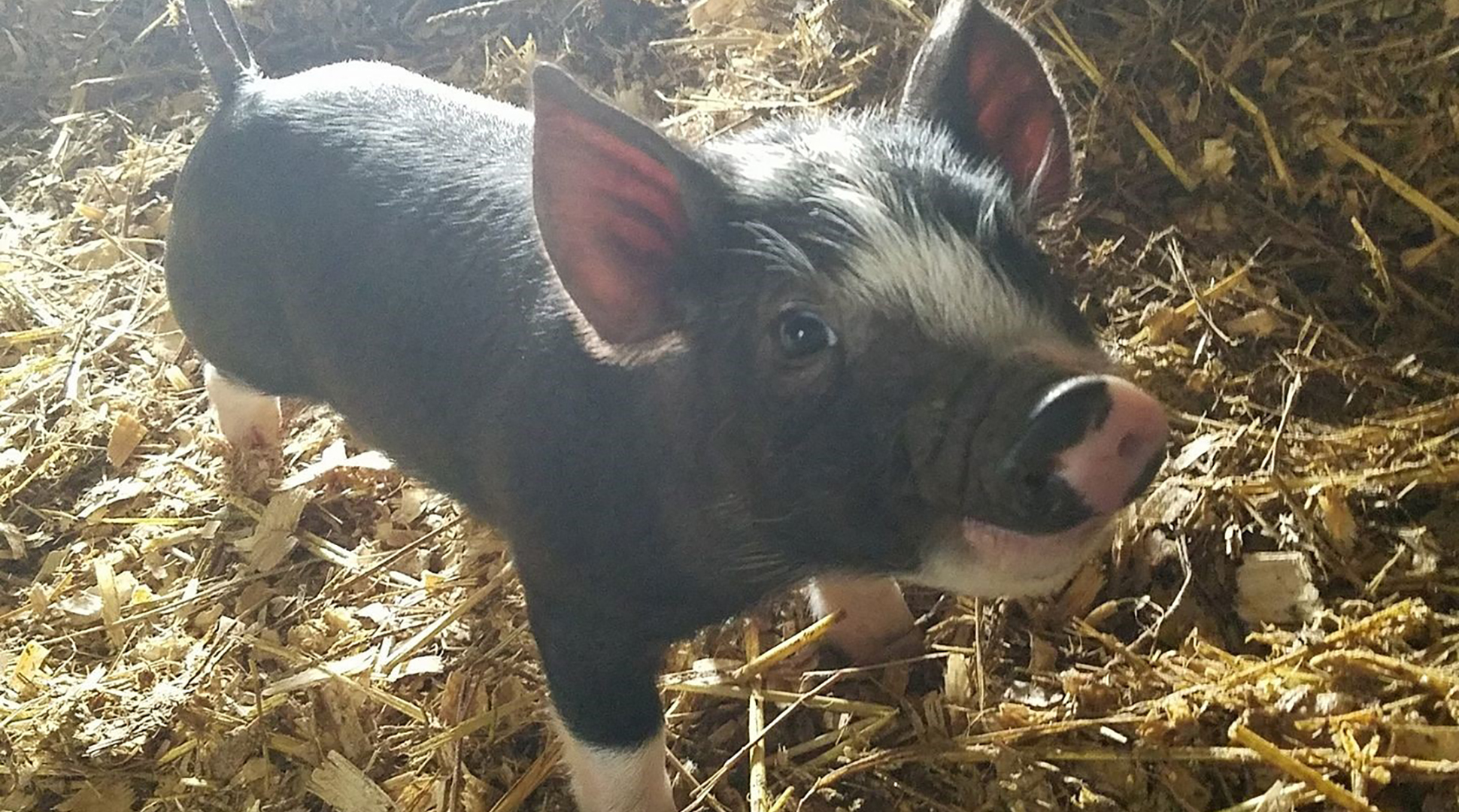Photo by Heather Lang
By Caitlyn Lamm @ISUCaitLamm
Do you consider yourself a lifelong learner?
If you’re nodding your head, then you know that label is a badge of honor for those of us who often find ourselves asking, “Why?” or “How?”
Despite working in agriculture and being part of a family farm, I’m fully willing to admit there’s still so much I don’t know. So, I set my sights on gaining more knowledge about one of our state’s number one ag commodities — pigs.
Equipped with a 110-page book of best practices and a series of online training modules, I decided to become Pork Quality Assurance Plus certified. This educational program keeps pig farmers up to date on the best research and standards related to animal well-being, public health, biosecurity, the environment and more. Through this process, I learned pig farmers are also lifelong learners who continuously improve the sustainability and animal stewardship on their family farms as new research and technology becomes available.
We practice a little biosecurity at home, but pig farmers think about it across the farm.
As I dug into the modules though, I couldn’t help but notice parallels between animal care and my own home life:
1. Pig farmers have a close relationship with veterinarians like I do with my pediatrician.
I’m so lucky to have a great pediatrician. She knows my children, listens to my concerns and is available to take my calls outside of appointments. We work together to come up with a treatment plan when my children get sick, and I trust her guidance.
In pig farming, they call this a veterinarian-client-patient relationship, or VCPR. In fact, this relationship is so crucial, the word “veterinarian” is mentioned more than 100 times in the PQA Plus training guide. VCPR is an agreement between the farmer and vet to work as a team to create a tailored plan to keep a pig herd healthy. It includes follow through of that plan and adhering to regulations pertaining to medical interventions.
2. We practice a little biosecurity at home, but pig farmers think about it across the farm.
Do you take your shoes off at the door when you get home? It’s a practice we enforce at our home where our kids like to crawl around on the floor pretending to be dinosaurs.
Biosecurity is the practice of preventing disease from entering and spreading within an animal herd. Farmers have written biosecurity plans that encompass the entire farm. Farmers often will shower in and out of a facility and have designated clothes and boots they wear when caring for their pigs to make sure they’re not bringing harmful bacteria into a barn.
They also work hard to maintain a clean-living environment for their pigs. This includes keeping a “sterile zone” around the barn free of weeds where disease-carrying rodents may like to hide and keeping animal feed stored in tightly contained bins to protect it from wildlife. Farmers make sure to disinfect equipment regularly, and even disinfect items like cellphones if they are being carried into the barn.

Credit: Caitlyn Lamm
3. Like my daughter — pigs take a while to warm up to people.
When we’re around new people, it takes a good 30 to 40 minutes of holding my one-year-old daughter before she’s ready to be set down.
Pig farmers walk their barns every day to make sure animals are eating, drinking and maintaining a healthy level of activity. But these walkthroughs also get the pigs used to a human presence. Pigs don’t inherently understand a farmer is coming into their pen to make sure they’re well cared for. But through consistent, positive interactions with a farmer, these animals become more relaxed. This makes them easier to move and handle — a good thing that prevents injury to both the animal and the farmer. And like my daughter, they appreciate a little extra space when they’re feeling fearful and will allow that space to narrow as they become more comfortable over time.
4. Getting a pig onto a semi-truck sounds a lot like trying to get my toddler out the door.
If you’re a parent, you’ve been there. You’re in a hurry to get out the door, and your child keeps finding the most random things to impede your progress.
Turns out, pigs can get distracted by a lot of things as they’re being loaded out, too. If wind blows in their face, a shadow startles them or they see a shiny surface, they may slow down or stop the flow of the other pigs.
Farmers are encouraged to help pigs stay calm by doing their best to minimize distractions and give pigs plenty of time to move. By watching their pigs’ behavior, a farmer can see if they are becoming distressed and “release the pressure” on their space to help soothe them.
While I received my PQA Plus certification card in the mail, I don’t think I’ll be raising pigs anytime soon. However, I am glad I took the time to see how pig farmers are ensuring their animals live a comfortable and healthy life. And how through continued education, they are finding new ways to elevate their top-notch level of compassionate care.
Caitlyn Lamm is Iowa Farm Bureau’s public relations specialist. This column is republished with permission.
